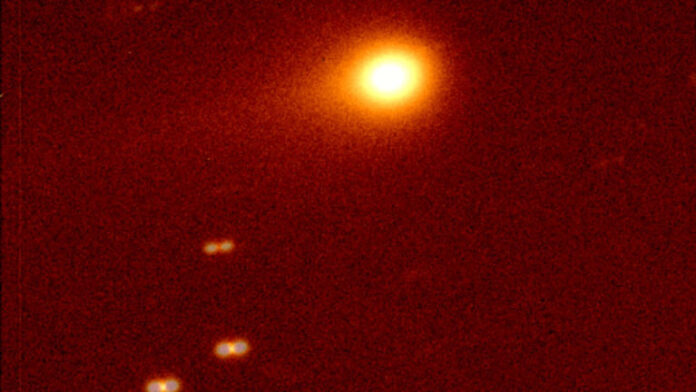
By Samuel Lopez | USA Herald
The world’s planetary defense infrastructure is now on high alert as interstellar object 3I/ATLAS (C/2025 N1) continues to defy expectations and challenge standard models of celestial mechanics. In a rare move, the U.N.-endorsed International Asteroid Warning Network (IAWN) has officially included 3I/ATLAS in its Comet Astrometry Campaign—a sign that the global scientific community is taking this enigmatic object very seriously. The campaign’s goal is to refine measurements, improve predictive models, and test the limits of humanity’s ability to track objects that might not behave like natural comets at all.
3I/ATLAS is the third confirmed interstellar visitor to enter our solar system, and its behavior is causing both excitement and concern. Unlike conventional comets that display predictable dust tails trailing away from the Sun, this object exhibits an “anti-tail”—a luminous stream of particles extending toward the Sun, an optical and physical anomaly that has baffled observers.
“Comets present unique challenges for accurate astrometric measurements and orbit predictions,” IAWN officials said, explaining why the group chose 3I/ATLAS as a prime focus of its latest tracking initiative. The organization added that its inclusion is designed to “exercise the capability of the observing community to extract accurate astrometry,” a diplomatic way of acknowledging that 3I/ATLAS might demand techniques never before used.
Harvard astrophysicist Dr. Avi Loeb, a leading voice in the ongoing debate, believes that the scientific world can no longer dismiss the possibility of artificial origin. Loeb, who previously theorized that the 2017 interstellar object ‘Oumuamua could have been alien technology, now estimates that 3I/ATLAS carries roughly a 40% likelihood of being a form of extraterrestrial technology—perhaps a mothership releasing reconnaissance probes. NASA has publicly rejected that notion, maintaining its classification of 3I/ATLAS as a comet, yet its tone has notably softened in light of the IAWN’s formal intervention.
Loeb and U.S. Rep. Anna Paulina Luna have jointly urged the United Nations to adopt contingency measures for identifying and responding to potential non-human technologies approaching Earth’s orbital sphere. “The clearest technological signature would be a maneuver or the release of mini-probes near perihelion,” Loeb wrote in a recent blog post, referring to October 29, 2025—the date 3I/ATLAS will reach its closest point to the Sun. “If 3I/ATLAS is a massive mothership, it will likely continue along its original gravitational path and ultimately exit the Solar system, while releasing mini-probes.”
That moment, astronomers say, could settle the debate once and for all. Observatories across Europe, Asia, and the Americas are synchronizing instruments to record high-resolution imagery and radio signatures during the perihelion window. If any deviation or controlled movement occurs, it would redefine humanity’s understanding of both interstellar physics and planetary defense readiness.
For now, 3I/ATLAS remains an unsolved riddle—its light curve, trajectory, and rotation pattern continuing to elude full explanation. Whether natural or not, its inclusion in an official planetary defense framework signals that the global community recognizes the need to prepare for the unknown. In a world where cosmic surprises are no longer theoretical, planetary defense is no longer a niche scientific concern—it’s a matter of global security.


